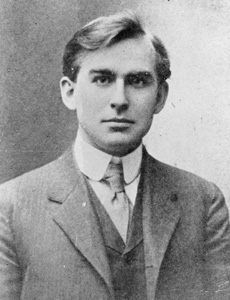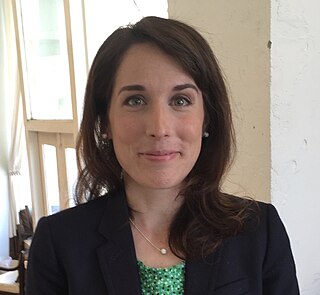Related Research Articles
Barbara Mary Levick was a British historian and epigrapher, focusing particularly on the Late Roman Republic and Early Empire. She is recognised within her field as one of the leading Roman historians of her generation.
Pseudoarchaeology—also known as alternative archaeology, fringe archaeology, fantastic archaeology, cult archaeology, and spooky archaeology—is the interpretation of the past by people who are not professional archaeologists and who reject or ignore the accepted data gathering and analytical methods of the discipline. These pseudoscientific interpretations involve the use of artifacts, sites or materials to construct scientifically insubstantial theories to strengthen the pseudoarchaeologists' claims. Methods include exaggeration of evidence, dramatic or romanticized conclusions, use of fallacious arguments, and fabrication of evidence.

Graham Bruce Hancock is a British writer who promotes pseudoscientific theories involving ancient civilizations and hypothetical lost lands. Hancock speculates that an advanced ice age civilization was destroyed in a cataclysm, but that its survivors passed on their knowledge to hunter-gatherers, giving rise to the earliest known civilizations of ancient Egypt, Mesopotamia, and Mesoamerica.

Fingerprints of the Gods: The Evidence of Earth's Lost Civilization is a 1995 pseudoarcheology book by British writer Graham Hancock, which contends that an advanced civilization existed in prehistory, one which served as the common progenitor civilization to all subsequent known ancient historical ones. The author proposes that sometime around the end of the last ice age this civilization ended in cataclysm, but passed on to its inheritors profound knowledge of such things as astronomy, architecture and mathematics.

Tenney Frank was a prominent American ancient historian and classical scholar. He studied many aspects of Ancient Rome, for instance its economy, imperialism, demographics and epigraphy.
Agnes Freda Isabel Kirsopp Lake Michels known as "Nan" to her friends, was a leading twentieth century scholar of Roman religion and daily life and a daughter of the Biblical scholar Kirsopp Lake (1872–1946).

The Joukowsky Institute for Archaeology and the Ancient World is an interdisciplinary center at Brown University focused on research and teaching of archaeology, with an emphasis on the archaeology and art of the ancient Mediterranean, Egypt, and the Near East. Brown's undergraduate and graduate programs in archeology are organized through the institute.
The Lexicon Topographicum Urbis Romae (1993–2000) is a six-volume, multilingual reference work considered to be the major, modern work covering the topography of ancient Rome. The editor is Eva Margareta Steinby, and the publisher is Edizioni Quasar of Rome. It is considered the successor to Platner and Ashby's A Topographical Dictionary of Ancient Rome.

Mary Hamilton Swindler was an American archaeologist, classical art scholar, author, and professor of classical archaeology, most notably at Bryn Mawr College, the University of Pennsylvania, and the University of Michigan. Swindler also founded the Ella Riegel Memorial Museum at Bryn Mawr College. She participated in various archaeological excavations in Greece, Egypt, and Turkey. The recipient of several awards and honors for her research, Swindler's seminal work was Ancient Painting, from the Earliest Times to the Period of Christian Art (1929).
Waldemar Heckel is a Canadian historian.

Magicians of the Gods: The Forgotten Wisdom of Earth's Lost Civilisation is a 2015 book by British pseudoarchaeology writer Graham Hancock, published by Thomas Dunne Books in the United States and by Coronet in the United Kingdom. Macmillan Publishers released an "updated and expanded" paperback edition in 2017.
The siege of Thessalonica in 254 was the successful defense of the city of Thessalonica by local Roman militia during an invasion of the Balkans by the Goths.
Cornelia Catlin Coulter was an American classicist and academic who was Professor of Latin at Mount Holyoke College from 1926 to 1951. She is known in particular for her work on the Medieval and Renaissance use of Classical sources and for her presidency of and advocacy for the Classical Association of New England.
Rebecca Jane Sweetman is an Irish classical scholar. She is Professor of Ancient History and Archaeology and the former Head of the School of Classics at the University of St Andrews. Sweetman is known in particular for her work on the archaeology of Roman and Late Antique Greece. Since September 2022, she has been Director of the British School at Athens.

Sarah Emily Bond is a Professor of History at the University of Iowa. Her research focuses on late Roman history, epigraphy, law, topography, GIS, and digital humanities.
Jennifer A. Baird.jpg Jennifer Baird, is a British archaeologist and academic. She is Professor in Archaeology at Birkbeck, University of London. Her research focuses on the archaeology of Rome's eastern provinces, particularly the site of Dura-Europos.
Allison Glazebrook is Professor of Greek Social and Cultural History, Gender and Sexuality, and Greek Oratory at Brock University. She was President of the Classical Association of Canada 2018–20.
Malcolm Davies is a British classicist and textual critic of Ancient Greek literature, and is Emeritus Research Fellow in Classics at St John's College, Oxford. He specialises in the Greek epic cycle, Greek lyric poetry and Greek tragedy, and has edited texts from various ancient Greek poets.
William Kendrick Pritchett was an American scholar of ancient Greek history. He authored over 30 books on the subjects of Greek warfare, topography, and time-keeping.
David Lorton was an Egyptologist and translator, most well known for his work translating European research into English.
References
- ↑ "Professor Garrett G. Fagan, PhD". The Great Courses.
- ↑ "Garrett G. Fagan" Archived 2017-03-08 at the Wayback Machine . Penn State University.
- ↑ Wheeler, Stephen. "In Memoriam: Garrett G. Fagan". classicalstudies.org. Society for Classical Studies . Retrieved November 25, 2023.
- ↑ Reviews for The Topography of Violence in the Greco-Roman World:
- Brice, Lee L. (April 2018). "Book Reviews: The Topography of Violence in the Greco-Roman World". The Journal of Military History . 82 (2): 587. Retrieved December 21, 2022– via ProQuest.
- Brown, S. (March 2017). "The Topography of violence in the Greco-Roman world". Choice Reviews . 54 (7): 1067. Retrieved December 21, 2022– via ProQuest.
- Muse, Kevin (October 2018). "TYPES OF VIOLENCE IN THE ANCIENT WORLD: The Topography of Violence in the Greco-Roman World". The Classical Review . 68 (2): 463–466. doi:10.1017/S0009840X18001506. S2CID 166101751 . Retrieved December 21, 2022.
- Sears, Gareth (2017). "Parallel stories of spatial violence". Journal of Roman Archaeology . 30: 598–601. doi:10.1017/S1047759400074389. S2CID 165247133 . Retrieved December 25, 2022.
- Whately, Conor (February 2017). "The Topography of Violence in the Greco-Roman World". Bryn Mawr Classical Review . Retrieved December 25, 2022.
- Colwill, David (January 13, 2017). "The Topography of Violence in the Greco-Roman World". Classics For All . Retrieved December 25, 2022.
- ↑ Reviews for The Lure of the Arena:
- Papalas, A. J. (September 2011). "The lure of the arena: social psychology and the crowd at the Roman games". Choice Reviews . 49 (1): 182. Retrieved December 25, 2022.
- Bell, Andrew J. E. (February 2013). "The Lure of the Arena: Social Psychology and the Crowd at the Roman Games". The American Historical Review . 118 (1): 231. doi:10.1093/ahr/118.1.231a . Retrieved December 25, 2022.
- Giesecke, Annette L. (October 2012). "The Lure of the Arena. Social Psychology and the Crowd at the Roman Games". The Classical Review . 62 (2): 596–598. doi:10.1017/S0009840X12001217. S2CID 231888911 . Retrieved December 25, 2022.
- Aldrete, Gregory S. (November 2012). "Reviews: The Lure of the Arena: Social Psychology and the Crowd at the Roman Games". The Journal of Roman Studies . 102: 329–330. doi:10.1017/S0075435812000275. S2CID 162010826 . Retrieved December 25, 2022.
- Connolly, Joy (October 14, 2011). "Front row seat for death". Times Literary Supplement (5663): 4. Retrieved December 25, 2022– via ProQuest.
- Palaima, Tom (June 2, 2011). "Blood flowing, hordes roaring". Times Higher Education (2001): 52. Retrieved December 25, 2022– via ProQuest.
- Gervais, Kyle (December 2013). "The Lure of the Arena: Social Psychology and the Crowd at the Roman Games". Bryn Mawr Classical Review . Retrieved December 25, 2022.
- Manas, Alfonso (2016). "Book Review: The Lure of the Arena: Social Psychology and the Crowd at the Roman Games". The International Journal of the History of Sport . 33 (6–7): 761–763. doi:10.1080/09523367.2015.1132039. S2CID 146961661 . Retrieved December 25, 2022.
- Brunet, Stephen (2012). "Review: The Lure of the Arena: Social Psychology and the Crowd at the Roman Games". Mnemosyne . 65 (4–5): 862–865. doi:10.1163/1568525X-12341243. JSTOR 41725276 . Retrieved December 25, 2022.
- Carter, Michael J. (2012). "Romans Like Us". Journal of Roman Archaeology . 25: 704–707. doi:10.1017/S1047759400001616. S2CID 160379449 . Retrieved December 25, 2022.
- Melchior, Aislinn (2012). "The Lure of the Arena. Social Psychology and the Crowd at the Roman Games". Sehepunkte . 12 (6): 362. doi:10.15463/rec.1189738687 . Retrieved December 25, 2022.
- Forichon, Sylvain (2012). "The Lure of the Arena: social psychology and the Crowd at the Roman Games". Essais: revue interdisciplinaire d'Humanités . 1: 140–143. doi: 10.4000/essais.11163 . S2CID 246559291 . Retrieved December 25, 2022.
- ↑ Reviews for New Perspectives on Ancient Warfare:
- Naiden, F. S. (April 2013). "Ancient Warfare". The Classical Review . 63 (1): 150–151. doi:10.1017/S0009840X1200279X. S2CID 164040959 . Retrieved December 26, 2022.
- Rihll, T. E. (December 2010). "New Perspectives on Ancient Warfare. History of Warfare, 59". Bryn Mawr Classical Review . Retrieved December 26, 2022.
- ↑ Reviews for Archaeological Fantasies:
- Stoczkowski, Wiktor (June 2007). "Archaeological Fantasies: How pseudoarchaeology misrepresents the past and misleads the public". Antiquity . 81 (312): 472–473. doi:10.1017/S0003598X00095363. S2CID 164057784 . Retrieved December 26, 2022.
- Ickerodt, Ulf (2006). "Archaeological Fantasies. How pseudoarchaeology misrepresents the past and misleads the public". Ethnographisch-Archäologische Zeitung . 47: 407–412. Retrieved December 26, 2022.
- ↑ Reviews for From Augustus to Nero:
- "From Augustus to Nero; an intermediate Latin reader". Reference and Research Book News . 21 (3). August 2006. Retrieved December 26, 2022– via ProQuest.
- Solodow, Joseph B. (February 2007). "From Augustus to Nero: An Intermediate Latin Reader". Bryn Mawr Classical Review . Retrieved December 26, 2022.
- ↑ Reviews for Bathing in Public in the Roman World:
- Ingoglia, R. T. (December 1999). "Bathing in public in the Roman world". Choice Reviews . 37 (4): 775–776. Retrieved December 26, 2022– via ProQuest.
- Rodgers, R. H. (Spring 2002). "Book Reviews: Bathing in Public in the Roman World". Phoenix . 56 (1–2): 205–207. doi:10.2307/1192497. JSTOR 1192497 . Retrieved December 26, 2022.
- Hopkins, Keith (October 29, 1999). "All off and all in". Times Literary Supplement (5039): 36. Retrieved December 26, 2022– via ProQuest.
- Masciantonio, Rudolph (October 1999). "Bathing in Public in the Roman World". Bryn Mawr Classical Review . Retrieved December 26, 2022.
- Koloski-Ostrow, Ann Olga (April 2004). "Bathing in Public in the Roman World. By Garrett G. Fagan". American Journal of Archaeology . 108 (2): 307–308. doi:10.1086/AJS40025254. S2CID 245298342 . Retrieved December 26, 2022.
- Bruun, Christer (2002). "Public baths in the Roman West". Journal of Roman Archaeology . 15: 459–465. doi:10.1017/S1047759400014239. S2CID 162572344 . Retrieved December 26, 2022.